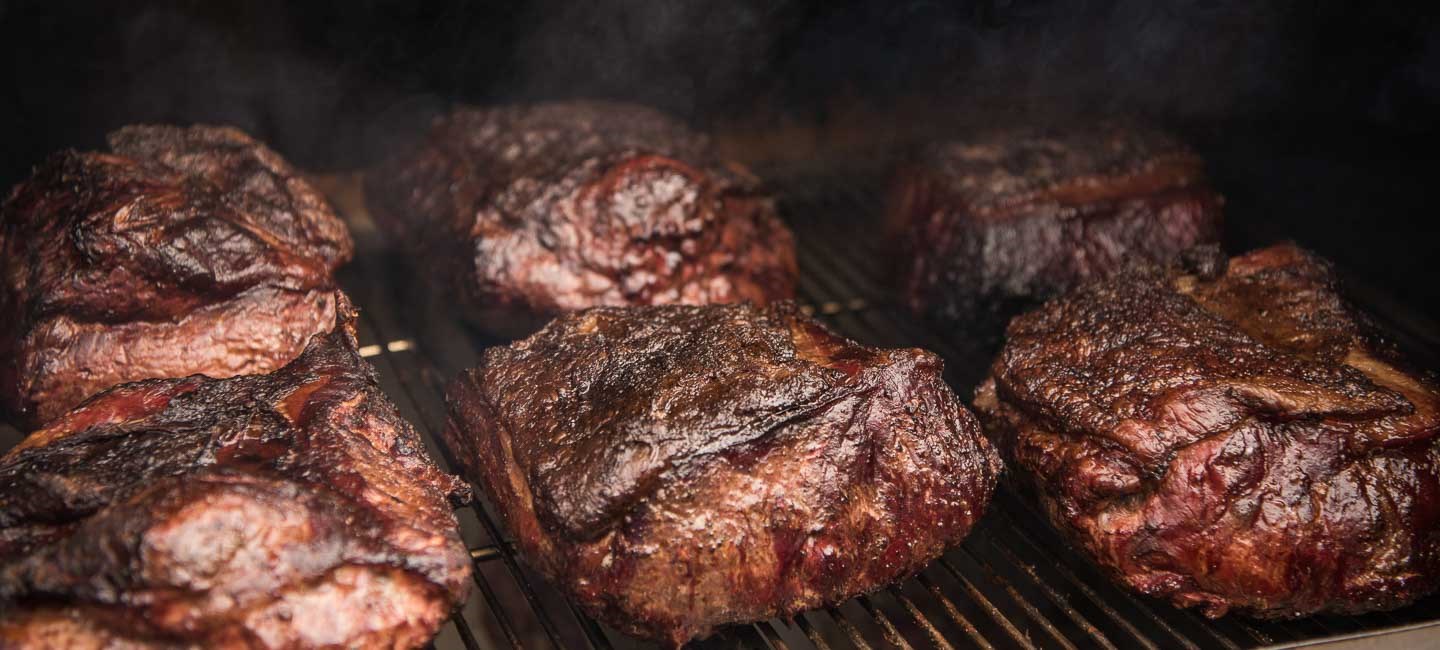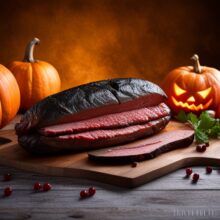Barbecue Vs Grill

Barbecuing and grilling are two different cooking methods, but both use high temperatures and indirect heat to cook food slowly. Barbecues also use charcoal, which gives their food a smoky flavor. Here are a few of the benefits of each method.
Barbecuing involves cooking food slowly over indirect heat
Barbecuing is the process of cooking food slowly over an indirect heat source, such as a smoker or grill. It is ideal for cooking tough cuts of meat. The meat is cooked at a low temperature, which is usually between 225 and 275 degrees Fahrenheit. The meat will become tender and juicy when cooked this way, and will also retain its natural flavors. Most people who barbecue use large bone-in cuts of beef or pork.
Barbecuing is often mistaken for grilling, but the two techniques are not the same. Barbecuing involves cooking food over a low temperature for many hours, while grilling uses higher heat and a shorter cooking time. If you want a deep smoky flavor, barbecuing is the way to go.
Indirect heat allows heat to surround the food from all sides, without rotating it. While grilling requires fast cooking, indirect heat allows the heat to reach the entire surface of the food. This allows the meat to be tender and flavorful, and is a good option for tougher meats and vegetables.
Indirect grilling involves using fewer grill rings to create lower heat. This method is ideal for longer cuts of meat, since thicker cuts require longer cooking times. Because hot air is reflected from different sides, indirect cooking allows the meat to be tender and juicy. The key to indirect grilling is to keep the lid closed and avoid peeking while grilling. If you do lift the lid, you risk overcooking the food, and it will increase the cooking time.
Barbecuing is a popular way to cook meat. The cooking time varies greatly, depending on the size of the meat and the type of barbecue. A smaller meat may need up to two hours to cook while a large one may take up to 18 hours. The connective tissues need time to break down. Thin slices of pork, for example, would be tough to eat.
Grilling involves cooking food over a high flame for a short period of time
Grilling is a method of cooking food over a high flame. During this process, the heat from the flames transfers to the food, changing its chemistry and creating specific flavors and textures. Grilling can be done using several different methods. For example, in direct grilling, the food is directly placed over the heat source, without the help of a cover. This method produces quick, even cooking with intense heat, and is best for thin cuts of meat and vegetables. Larger cuts of meat can easily overcook on this method.
Grilled meat has a caramelized or brown exterior because of the Maillard Reaction, named after the French scientist Louis Camille Maillard who discovered the link between cooking and food transformation. In this process, amino acids combine with sugars to produce a brown color in meat. This process is known as “browning” by cooks.
Barbecue and grilling both use high heat to cook food, but grilling is generally faster. Depending on the type of food, grilling can take several hours or a few minutes. The optimum temperature for grilling is 310 degrees Fahrenheit. The temperature of a grill varies according to the type of food and the type of heat source.
Another cooking method involving high heat is broiling. This method involves placing food on a griddle. The food is browned over high heat and then cooked through by lowering the temperature to a more moderate level. While frying is also a great way to cook meats, broiling uses a pan over direct heat. It can also be done indoors using a special range top.
When it comes to meat, the cooking time depends on the type of meat and its cut. For example, chicken breasts need about 8 minutes to fully cook, while steaks can take anywhere from 10 minutes to an hour. Small pieces of meat, like chicken pieces, are better suited for grilling than large, fatty cuts.
Grilling can also be beneficial for your health. Unlike pan-fried food, grilled meats have a better flavor than those cooked in a pan. In addition, grilling doesn’t use any additional oils or fats. Pan-frying increases the amount of fats in food, but it is healthier than deep-frying.
Charcoal gives off different smoky flavors
Charcoal grills give off different smoked flavors depending on how they’re used. You can use charcoal to sear foods or cook them slowly over a low heat for intense smoky flavor. Charcoal grills are popular for a number of reasons.
Charcoal briquettes are the most common fuel for charcoal grills. Charcoal briquettes give off a mild smoky flavor. Because charcoal briquettes are slow burning, you shouldn’t put meat directly on them as they’re burning. You should wait until the charcoal briquettes are completely ash before placing your meat on them. This will help prevent the charcoal’s chemical taste from affecting the food.
Charcoal grills also give off a different smoky flavor than gas grills. The charcoal drippings in charcoal grills turn into a flavorful vapor that gives your food a distinctive smoky flavor. Gas grills, on the other hand, have metal grates that cover the flame and prevent food drippings from reaching the food. Unlike charcoal grills, gas grills give off more steam, which helps meat retain its natural juices and stay moist.
Charcoal grills are easy to set up. Just make sure you prepare all your ingredients before cooking. This way, you’ll end up with less frustration and have a more delicious meal. If you’re a beginner, ask a professional or a friend to show you how to use the grill.
If you don’t want to use charcoal, you can use wood chips instead. These can be bought at a hardware store, supermarket, or online. Various woods give different flavors of smoke, so be sure to research which one suits your tastes and cooking style. Oak, maple, and hickory are all good woods for grilling.
Charcoal grills are better for grilling meats and vegetables than gas grills. They tend to reach higher temperatures, allowing for distinct sear marks on meat. In addition, charcoal grills allow the drippings of vegetables and meat to turn into ultra-flavored steam. Moreover, charcoal grills are cheaper than gas grills, which can cost up to $200 or more.
When buying a charcoal grill, make sure you buy the right size for your needs. Bigger models have bigger cooking areas, but they may not provide you with the cooking area you need. Also, think about how often you plan to use the charcoal barbecue. This will help you determine the amount of food you can grill at once, and prevent uneven cooking.
Choosing a grill based on size
Size plays an important role in choosing a grill. Larger grills typically have more burners and are easier to use for multi-zone cooking. At a minimum, you should choose a grill with three or more burners. When choosing the size of your grill, consider how many people you plan on cooking for. For example, if you usually cook only for your immediate family, a smaller grill is probably adequate. Also, consider the size of the area where you plan to use your grill.
The size of a grill is important because it directly affects the number of burners it has. Most models have between two and six burners, although larger grills can have up to eight. It is also important to consider the cost of the grill. Larger ones will generally be more expensive.
Size of a grill is also important because you will have to make space for it. You should make sure that the grill will fit in your patio or backyard. Make sure that you measure the height and width of the space before you purchase one. You should also consider the amount of food you plan to cook. If you want to cook several dishes simultaneously, a smaller grill is likely to be too small.
In general, larger grills are better for large gatherings. However, they also require more space and fuel. Similarly, a grill that is too small will overcrowd your food and make the cooking process more time-consuming. Alternatively, a medium-size grill may be more versatile than a large one.
Size is also important in a built-in grill. Smaller models come with three burners, while larger models can have four or five. Some outdoor grills are made with additional accessories like a sink, a cooler, or an additional side burner. These accessories can make it easier to prepare meals.
The size of a gas grill is the most important factor to consider when shopping for one. The total area of the grill, including the warming rack, is measured in square inches. A minimum grill grate should be 450 square inches, while a larger one should have a total cooking area of 500 square inches.
Read more great BBQ articles at Bob's BBQ Tips



